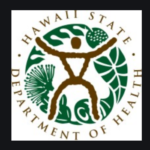The Kalalau Trail in the Nāpali Coast State Wilderness Park will re-open to visitors tomorrow following closure due to a norovirus outbreak among park visitors.
During the temporary closure and in consultation with Hawaiʻi Department of Health (DOH), the Department of Land and Natural Resources (DLNR) Division of State Parks (DSP) initiated a thorough disinfection and cleaning and removed and airlifted barrels of effluent for treatment and disposal from the Hanakāpī’ai, Hanakoa and Kalalau composting comfort stations. A crew of three flew in and conducted two maintenance passes at both Hanakāpī’ai and Kalalau, and a six-person crew flew into Hanakoa and spent a day performing maintenance activities. Painting and vegetation removal was also performed as warranted among the comfort stations.
While it is not possible to ensure complete eradication of norovirus from the park or its facilities, substantial preventive measures have been taken during the closure. Repeated disinfection of comfort stations, weeks of closure allowing natural processes (rain, UV light, virus degradation) to diminish remaining virus, and the cessation of new infections, give DOH and DLNR confidence that opening the park now is appropriate.
Visitors to the re-opened park are advised to take precautions including careful hand-washing with soap and water, treating water before drinking it and avoiding visiting the park while ill.
Visitors are asked to notify DOH if they develop symptoms of vomiting or diarrhea during or within 72 hours of a visit to the park.
The total number of norovirus cases reported to date is approximately 50 and remaining stable. The onset of new cases peaked on Sept. 2 and there have been no new cases reported with onset after Sept. 4. While the increased public health risk has subsided, DOH will continue to investigate case reports and conduct surveillance of norovirus-like symptoms in emergency room and urgent care visits, in addition to requesting that cases be reported by park visitors and/or by healthcare providers.
The initial source of this outbreak was most likely a park visitor who was already infected with norovirus and became acutely ill in the park.
